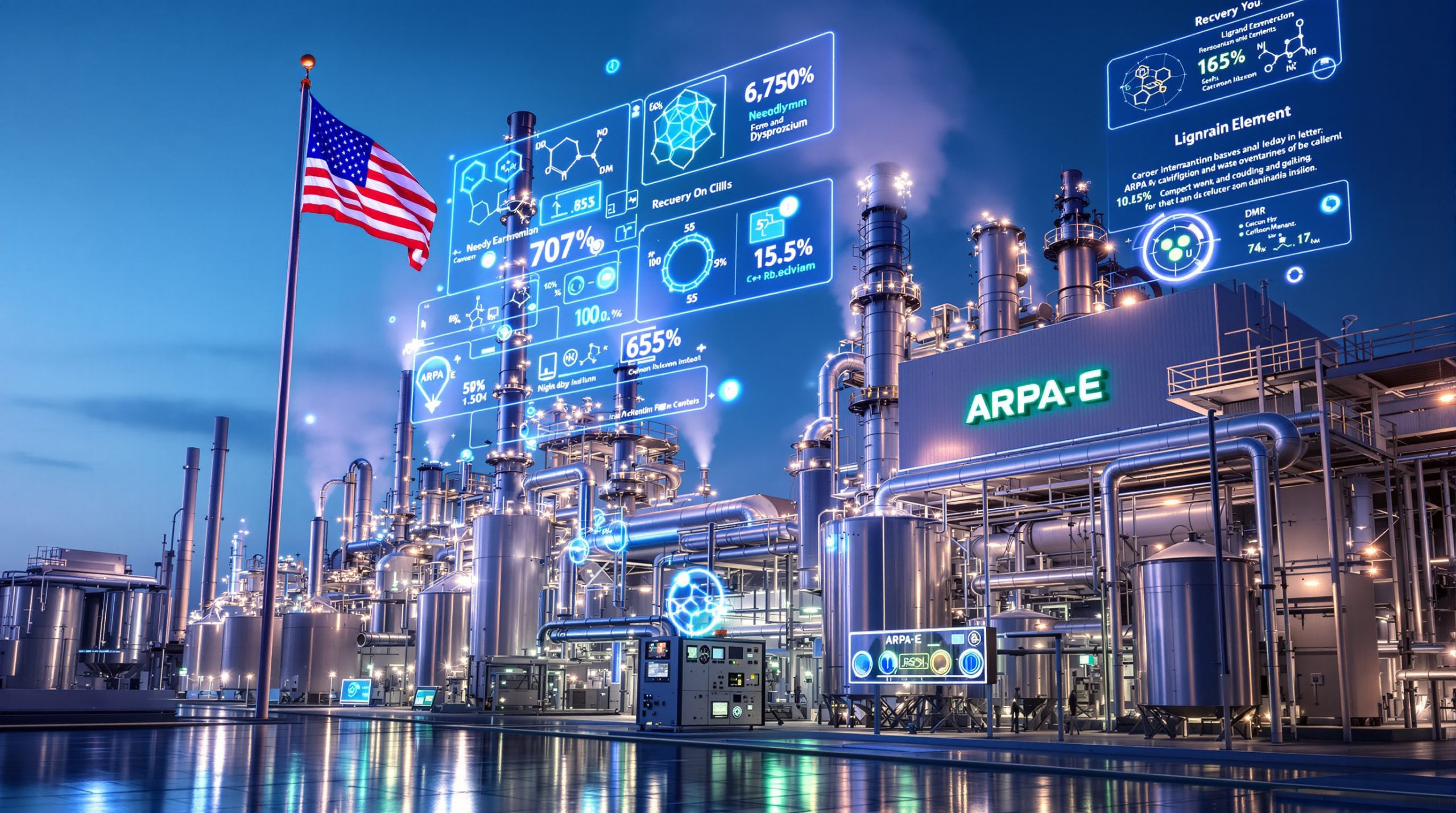Mining Productivity Revolution: How Technology Eliminates Operational Silos
In today's rapidly evolving mining landscape, operations face dual challenges of increasing productivity while meeting stringent sustainability goals. The industry is undergoing a profound transformation as innovative technologies break down traditional operational silos, creating integrated workflows that enhance efficiency, reduce costs, and improve resource utilization. The latest digital transformation insights show that mining companies implementing connected technological solutions have seen productivity improvements of 15-20% within the first year of adoption alone, with long-term gains approaching 30% for fully integrated operations.
The Critical Productivity Challenges in Modern Mining
The Siloed Operations Problem
Traditional mining operations have historically operated as disconnected islands of expertise. Geological teams, engineering departments, and production units function independently, creating significant information bottlenecks that directly impact operational efficiency. This fragmentation results in:
- Delayed decision-making processes averaging 3-5 days for critical operational changes
- Up to 30% duplicated efforts across departments when handling the same data
- Inconsistent data interpretation leading to 15-25% variability in resource estimates
- Severely reduced operational visibility across the mining value chain
- Financial losses estimated at $2-5 million annually for mid-sized operations due to inefficiencies
A 2023 industry survey revealed that 78% of mining companies identified siloed operations as their top productivity challenge, with 65% reporting significant communication barriers between technical teams.
"The historical separation between geological modeling, mine planning, and production execution represents the single largest untapped productivity opportunity in the mining sector today." — Dr. Sarah Chen, Mining Technology Integration Specialist
The Data Management Burden
Mining professionals spend an inordinate amount of time on non-analytical tasks. Recent time-utilization studies show geologists dedicating up to 60% of their working hours to:
- Data preparation and validation (27% of total time)
- Manual information transfer between incompatible systems (18%)
- Checking and reconciling inconsistent datasets (12%)
- Ingesting and formatting information from disparate sources (9%)
This administrative burden prevents highly skilled technical experts from applying their expertise to value-creating activities like detailed data analysis, generating deeper operational insights, and validating complex geological models.
Integrated Software Systems: Eliminating Operational Silos
Creating Connected Digital Ecosystems
Modern mining technology must function as part of an interconnected ecosystem rather than isolated point solutions. The mining 4.0 revolution is delivering integration of previously separate systems with measurable benefits:
| Integration Benefit | Operational Impact | Productivity Improvement |
|---|---|---|
| Seamless data transfer | Eliminates manual imports/exports | 75% reduction in data handling time |
| Real-time modeling capabilities | Enables near-instantaneous decisions | Decision cycle shortened by 65% |
| Unified data visualization | Creates consistent understanding | 40% improved cross-department alignment |
| Automated workflow triggers | Reduces handover delays | 80% faster process transitions |
| Centralized data governance | Ensures data integrity | 90% reduction in data inconsistencies |
According to mining technology implementation specialist Michael Rodriguez: "The most significant productivity gains come not from individual technologies, but from how they communicate with each other. A drill optimization system that doesn't feed directly into geological modeling provides only a fraction of its potential value."
Real-Time Operational Intelligence
Advanced integrated systems enable mining operations to implement sophisticated real-time intelligence capabilities:
- IoT sensor networks processing up to 500,000 data points per minute feeding live operational data into modeling systems
- Continuous face mapping with sub-meter accuracy that immediately updates geological models
- Automated grade control processes reducing sampling-to-decision timeframes from days to hours
- Streamlined handovers between exploration and production teams with 90% fewer documentation requirements
- Comprehensive uncertainty reduction through multi-source data integration and validation
These capabilities represent a paradigm shift from reactive to proactive mining operations. When integrated properly, they create a continuous feedback loop that enhances decision quality throughout the mining lifecycle.
Cloud-Based Collaboration Solutions
Cloud technology has fundamentally transformed how mining teams collaborate:
- Simultaneous multi-user access to geological models supporting up to 50 concurrent users without performance degradation
- Individual contributors working on discrete sections while maintaining overall model integrity through version control systems
- Automatic synchronization of changes to master models occurring within seconds of modifications
- Establishment of a single source of truth accessible to all stakeholders with role-based permissions
- Remote access capabilities enabling global specialist contributions without physical presence requirements
According to a 2023 implementation case study at a major copper mine, cloud collaboration reduced modeling time by 45% while improving accuracy by 18% compared to traditional workflows.
Data Governance: The Foundation of Mining Productivity
Ensuring Data Integrity Throughout the Mining Lifecycle
Effective data governance forms the foundation of productive mining operations, providing:
- Compliance with increasingly complex regulatory and audit requirements in multiple jurisdictions
- Reliable and usable geological data throughout its lifecycle from exploration to mine closure
- Seamless knowledge transfer between exploration and production phases, reducing rework by up to 35%
- Protection against data corruption or loss with estimated value preservation of $25-100 million per major deposit
- Standardized data collection and storage methodologies that enable cross-operation analysis and insights
"In mining operations, data governance isn't just an IT function—it's a critical operational necessity that preserves asset value and enables productivity." — Maria Santos, Mining Data Governance Expert
Implementing Robust Data Management Platforms
Modern data management solutions for mining operations must feature:
- Centralized data repositories accessible to all authorized personnel with comprehensive security controls
- Detailed audit trails documenting all data modifications down to field-level changes
- Intuitive interfaces that minimize training requirements for technical staff
- Mining-specific functionality aligned with established industry workflows and standards
- Automated validation rules to prevent data entry errors, reducing error rates by up to 85%
A critical but often overlooked aspect of data management is metadata standardization. By implementing consistent naming conventions and attribute definitions, mining companies can reduce data interpretation errors by over 70%, according to recent industry studies.
AI and Machine Learning: Transforming Mining Productivity
The Potential of AI in Mining Operations
Artificial intelligence and machine learning offer transformative capabilities that are revolutionizing mining productivity:
- Task automation that frees technical staff for higher-value activities, recovering up to 30% of specialist time
- Optimized resource allocation based on predictive analytics, improving equipment utilization by 25-40%
- Enhanced data collection and analysis at unprecedented scale (processing millions of data points hourly)
- Improved grade control through pattern recognition with 22% better prediction accuracy than traditional methods
- Significant uncertainty reduction in geological modeling by identifying correlations invisible to human analysts
- Accelerated operational decision-making with AI-augmented systems reducing analysis time by 85%
Advanced AI fleet management systems require significant upfront investment—typically $2-5 million for enterprise-scale deployments—but the ROI timeline has shortened dramatically, with most operations achieving positive returns within 12-18 months.
Ensuring Geological Accuracy in AI Applications
For AI to deliver meaningful value in mining operations, algorithms must be:
- Grounded in sound geological principles rather than purely statistical correlations
- Developed through close collaboration between domain experts and data scientists
- Designed to respect the physical constraints of geological systems and ore formation
- Validated against known geological conditions and historical production results
- Capable of explaining their reasoning in geologically meaningful terms to enable expert verification
"The most dangerous AI implementations in mining are those that produce plausible-looking results that violate geological first principles. The key is balancing algorithmic innovation with geoscience fundamentals." — Dr. James Wei, Mining AI Specialist
Practical Applications of Machine Learning in Drilling Operations
Drilling represents one of the most promising areas for AI/ML implementation:
- Automated core tray image processing and linearization with 99.5% accuracy
- Consistent cataloging and organization of core imagery enabling enhanced searchability
- Advanced visualization capabilities for diamond core analysis revealing microscopic mineral associations
- Pattern recognition for identifying geological features with 35% greater sensitivity than manual methods
- Predictive maintenance for drilling equipment reducing unplanned downtime by up to 45%
- Real-time optimization of drilling parameters (WOB, RPM, fluid flow) improving penetration rates by 20-30%
These technologies have progressed from experimental to operational status, with multiple vendors now offering field-proven solutions delivering measurable productivity improvements.
Connected Mining Technology: Quantifiable Benefits
Measurable Operational Improvements
The implementation of integrated mining technology solutions delivers concrete, measurable benefits:
- Enhanced grade control leading to 8-12% improved resource utilization
- Reduced operational costs through efficiency gains averaging 15-20% across the value chain
- Increased productivity with throughput improvements of 5-15% in crushing and processing circuits
- Minimized uncertainty in geological modeling resulting in 25-40% more accurate reserve estimates
- Optimized mill recovery through better ore body understanding, increasing recovery by 2-5%
- Accelerated project timelines from exploration to production, reducing time-to-first-production by 6-18 months
A recent implementation at a gold operation in Western Australia demonstrated how integrated systems reduced reconciliation variance from 18% to just 4% between geological models and actual production, representing millions in recovered value.
Creating a Culture of Collaboration
Beyond technical improvements, connected mining technologies foster fundamental organizational changes:
- Cross-functional teamwork between traditionally separated departments, breaking down professional silos
- Shared understanding of project goals and challenges through unified information access
- Transparent communication across organizational boundaries with 65% fewer misunderstandings
- Knowledge retention when personnel changes occur, preserving critical operational intelligence
- Continuous improvement through shared learnings and holistic performance analysis
This cultural transformation often delivers longer-lasting value than the technology itself, as it creates a foundation for ongoing operational excellence that transcends specific technical implementations.
Implementing Digital Transformation in Mining Operations
Developing an Integrated Technology Strategy
Successful digital transformation in mining requires a comprehensive approach:
- Assessment of current workflow bottlenecks and inefficiencies through detailed process mapping
- Identification of critical data integration points where information transfers affect decision quality
- Selection of compatible technologies that support seamless data flow between operational stages
- Implementation of cloud infrastructure to enable collaboration and remote access capabilities
- Development of comprehensive data governance policies that ensure information integrity
- Training programs to ensure technology adoption and maximize user productivity
Mining companies achieving the greatest productivity gains approach digital transformation as an enterprise-wide initiative rather than department-specific technology upgrades.
Overcoming Implementation Challenges
Mining companies must address several common obstacles when implementing connected technologies:
- Resistance to change from established workflow patterns, requiring careful change management
- Integration of legacy systems with modern platforms through custom API development
- Data migration and validation from historical sources, ensuring continuity of operational knowledge
- Balancing standardization with operational flexibility to accommodate site-specific requirements
- Managing cybersecurity risks in connected environments, especially for remote operations
According to implementation specialists, the most common reason for digital transformation failure in mining is underestimating the organizational change management requirements, which typically require 30-40% of the total project budget to address effectively.
The Future of Mining Productivity
Emerging Technologies on the Horizon
The next wave of mining productivity enhancements will likely come from:
- Advanced robotics for hazardous environment operations, reducing human exposure by 80%
- Quantum computing applications for complex geological modeling that can process previously unmanageable datasets
- Virtual reality in mining with 65% improved maintenance efficiency
- Digital twins efficiency for comprehensive mine simulation enabling scenario testing without production disruption
- Autonomous mining equipment with AI-driven decision-making capabilities operating continuously
- Blockchain applications for supply chain transparency and ESG compliance verification
Early adopters of these technologies are already seeing 5-10% productivity advantages over competitors, with the gap expected to widen as implementations mature and scale.
Creating Sustainable Productivity Improvements
Future mining operations will increasingly focus on:
- Balancing productivity with environmental responsibility through precision extraction techniques
- Reducing energy consumption through optimized operations, cutting carbon emissions by 15-30%
- Minimizing waste through precise resource extraction with near-zero dilution targets
- Improving safety through automation of hazardous tasks, reducing recordable incidents by 50-75%
- Building social license through transparent operations and community engagement
"The mines that will thrive in the coming decade will be those that view productivity and sustainability not as competing priorities, but as complementary aspects of operational excellence." — Elena Vasquez, Sustainable Mining Technology Advisor
FAQ: Mining Productivity and Technology Integration
How quickly can mining companies expect ROI from technology investments?
Return on investment timelines vary based on implementation scope and existing infrastructure, but most mining companies report significant productivity improvements within 12-18 months of deploying integrated technology solutions. The most immediate gains typically come from data integration and workflow automation, with one mid-tier gold producer documenting $3.2 million in operational savings during the first year of implementation. Complex transformations involving multiple operational areas may take 24-36 months to reach full payback, but offer substantially larger long-term benefits.
What skills are needed to maximize the benefits of mining technology?
Modern mining operations require a blend of traditional mining expertise and digital literacy. Key skills include:
- Data analysis capabilities for interpreting complex operational datasets
- Systems thinking to understand interconnections between operational areas
- Change management expertise to guide technological transitions
- Cross-functional collaboration abilities to break down departmental barriers
- Technical specialties in automation, robotics, and AI application
Many companies are investing in upskilling programs to develop these capabilities internally, with an average annual training investment of $8,000-12,000 per technical employee.
How can smaller mining operations compete with larger companies in technology adoption?
Cloud-based solutions have democratized access to advanced mining technologies, allowing smaller operations to implement powerful tools without massive infrastructure investments. Focused implementation of specific productivity-enhancing technologies can deliver substantial benefits even with limited resources. Starting with targeted high-value areas—such as drill core analysis or blast optimization—smaller operators can achieve 70-80% of the productivity benefits realized by larger companies at 20-30% of the implementation cost.
What role does cybersecurity play in connected mining operations?
As mining operations become increasingly digitized and connected, cybersecurity becomes a critical consideration. Mining companies must implement robust security protocols to protect sensitive geological data, operational information, and control systems from unauthorized access or disruption. Recent industry surveys indicate that 65% of mining companies have experienced cybersecurity incidents, with an average remediation cost of $550,000 per incident. Critical infrastructure protection has become a board-level concern, with many operations implementing air-gapped security for mission-critical systems while maintaining connectivity for productivity enhancements.
Implementing an Integrated Technological Ecosystem
The true power of mining technology lies not in creating a seamless technological ecosystem for enhancing mining productivity with modern technology. When properly implemented, these systems eliminate the friction between operational stages that has historically plagued mining productivity.
By replacing departmental information silos with connected workflows, mining companies can unlock productivity improvements that have remained elusive despite decades of incremental optimization. The resulting operational visibility enables proactive management rather than reactive problem-solving, fundamentally changing how mining operations function.
"The most successful digital transformations in mining focus not on the technology itself, but on the human workflows it enables and the collaboration it fosters. When people and systems work in harmony, productivity naturally follows." — Robert Tanaka, Mining Digital Transformation Lead
As the industry continues to evolve, those operations that successfully integrate their technological systems while maintaining focus on geological fundamentals will achieve the productivity gains necessary to thrive in an increasingly competitive landscape. According to mining innovation specialists, enhancing mining productivity with modern technology will continue to be the primary driver of operational excellence for years to come.
Ready to Discover the Next Major Mining Opportunity?
Gain instant alerts on significant ASX mineral discoveries with Discovery Alert's proprietary Discovery IQ model, turning complex data into actionable insights for both traders and long-term investors. Understand why historic discoveries generate substantial returns by visiting Discovery Alert's dedicated discoveries page and begin your 30-day free trial today.




